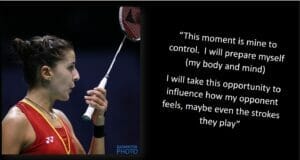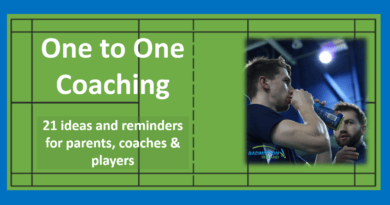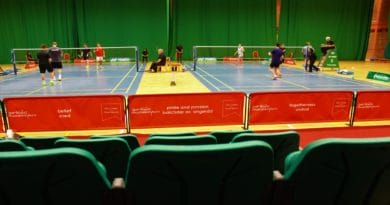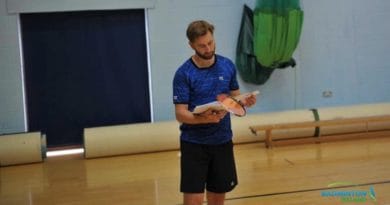The complexities of checking for understanding
How do you establish that your players understand
What methods do you use to check
What type of ‘understanding’ do you check for
Asking lots of questions to establish learning & understanding in sports
may not be the best way to go about it
– – – – – – – – – – – – – – – –
Background context
Why check for understanding
Types of understanding
Methods you could use
Final thoughts
– – – – – – – – – – – – – – – –
Background context
I’m concerned that coaches and coach education could be developing strategies that are ineffective when checking for understanding. At worse causing players to focus and pay attention to aspects that may not help their sports performance.
I’m not a sports scientist or researcher, I’m just a coach. There is a high probability that I’ll get my terms mixed up, or use incorrect definitions.
My concern came when listening to coaches checking for understanding primarily through simple direct questions and asking performers to list off what seemed like checklists. These thoughts are based on my own experiences and those of others. I’ve reflected on examples from my own coaching, some experiments, times when I thought it worked and plenty of examples that it didn’t.
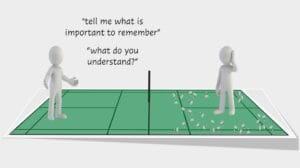
It came to a head on camp a few years ago when in a late night chat, I asked my friend if he thought that the questions he asked the players produced the performance improvements he was seeking.
Their reply may surprise you
“I’ve always asked these questions, and no, they don’t really seem to improve the performance.
In fact, the players tell me they understand, but I don’t see improvements”.
“Maybe I’m just not asking the right questions. But, how else do I know that they’ve listened and understood?”
This was followed with ….
“It’s tough trying to establish exactly WHAT they need to know and be able to tell me”
Using questions is complex, full of subtleties & maybe isn’t the best method when checking for understanding in a sports, physical environment
These questions may be the least effective method to establish understanding or identify learning
- “do you understand?” – is rarely replied with a “no” as players may fear the coach’s response
- “what did you see?” (asked after the coach demonstration) – often results in a ‘guessing’ game of multiple player responses whilst the coach ‘waits’ for the preferred reply
- “tell me what is important here” – is often responded to by the players by attempting to give a ‘coach’/manual’ answer or trying to guess what the coach wants to hear
Knowing what the coach knows (or the manual) does not guarantee an increase in performance
– – – – – – – – – – – – – – – –
Why check for understanding
For players
Ensuring that learning has taken place is essential. How else can you maximise the development of your players and assist them in progressing further or to break through a limitation?
Practice and task progression/emphasis require a judgement on the stage/level (insert your word) that the player has achieved to that point. Not all skills/techniques/tactics/thoughts/behaviours need to be fully understood and actioned before the practice/task can be amended.
The action of checking for understanding is only a gateway to allow for coaching decisions. Don’t assume that you are seeking an absolute understanding from performers.
For Coaches
Ensuring that learning has taken place is essential. How else could you judge the effectiveness of practice and the methods you employ as a coach?
Coaches seeking progression of their coaching abilities need to establish that there is some understanding exhibiting itself in their players. Repeating practices that you believe ‘are the best’ or that ‘worked for you’ is no guarantee that understanding and deep learning will take place.
Having many ways to develop the same aspects is vital, I like to think that coaches have 3 ways to coach/develop the same thing. In practice, you may need to develop 4 or 5 different methods or combinations of methodologies to achieve this.
The reflection provided from these two viewpoints is fuel for the development of both player and coach.
How often do you check for understanding (of the performers) to validate your coaching methods?
– – – – – – – – – – – – – – – –
Types of understanding
I contacted a coaching friend who I knew would have some contributions. We put together this list of ‘understandings’ that coaches regularly check for.
Not all were positive and advantageous to performance.
Plus we felt that some may have a function at one stage of learning/development but less so (or not at all) at another stage, it was a complex and wandering discussion. I’m not sure if that is the best description of our conversation, but it’s the best I could come up with.
We decided that coaches may seek to check for understanding in these aspects –
Technical knowledge (maybe not helpful)
Technical knowledge (maybe is helpful)
Demonstrating by intent on the court in action
Demonstration without conscious intent
Technical knowledge (maybe not helpful)
 Checking for understanding of ‘technical’ factors is fraught with nuance and context.
Checking for understanding of ‘technical’ factors is fraught with nuance and context.
I believe that it is not the aim of the coach to ensure that players have explicit knowledge of technical elements that happen within complex movements, especially powerful movements.
Doing that is not effective for development and often can absorb time better spect by the coach and player. Checking for understanding in these areas is not recommended.
The danger is that it is certainly easy to do as manuals and coach education systems lay out all the component parts and often provide a detailed breakdown. Who benefits from all the detailed technical knowledge is rarely discussed.
However, I believe that this information is for coaches to understand and then to find ways to communicate it that best help their players. Click this image to read more.
Examples that aren’t productive to learning are knowledge of
- specific biomechanical movements and position of body parts within the powerful complex movement (shoulder/elbow/forearm)
- the names given to the action of biomechanical movements (supination/pronation), however, the action itself is important – but developed through tasks, not ‘named’ knowledge
- how component body parts link together to form an action, often called chaining. Does it help players and how controllable are these chains?
Technical knowledge (that maybe is helpful)
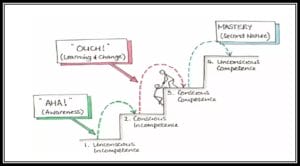 There are certainly some technical aspects that are important to understand, for players. This may sound like a contraction to the points above, I’ll let you decide.
There are certainly some technical aspects that are important to understand, for players. This may sound like a contraction to the points above, I’ll let you decide.
The subtlety is deciding what technical information is required when to introduce it and then critically if it should be reinforced once established.
The alternative approach is to complete the first 2 steps (the what, & when) but work hard not to reinforce or remind players as they progress. Click on this link or the image to read more
Many of these examples occur at the very start or end of a movement or stroke. The preparation or end positions. This is especially true when coaching novice players in say years 1 – 4 of their development. Once these aspects are observed, reduce the checking for understanding with any verbal communication.
Examples that are productive to learning are knowledge about
- The end racket position after a powerful high serve – over the left shoulder and pointing upwards?
- Arms & Legs wide to improve balance
- Understanding that ‘Landing with wide legs’ after striking a Round The Head jump aids with recovery
- Lunging by believing that contact is before striking or at the same time (the belief supersedes the reality in some situations)
- Believing that using cues or imagery (that contain technical information) is a means to success by the different feelings/actions created
The transfer of critical technical information is ‘wrapped up’ or ‘hidden’ within cues and suggestions, but nevertheless has an impact
Demonstrating by intent on the court in action
Observing players using methods to ‘remind’ themselves of what they want to do, and then trying to do it, is a great way to check for understanding.
The coach’s method for checking for understanding is best achieved by observation and if required, subtle cueing. Create situations that will (hopefully) include those players’ actions you wish to observe.
Avoid verbalising why you are setting that task, condition, or practice. Allow players to perform with and without self-determined intent. Observe, not intervene or initially cue.
When skills are being developed be cautious of criticising errors if the intent to perform is strong and the technique observed is ‘acceptable: ie within a large bandwidth. You must decide what this looks like!
Much of the coaching and coach deliberate interventions could involve the use of cueing, encouraging rituals, self-talk and reflection of outcome vs preparation.
The coach’s intent is to create learning, and then understanding through players having ‘deliberate’ intent prior to the action itself.
Examples that are productive to learning are
- Develop an understanding of the use of ritual when first introducing a high singles serve, and also when developing a low singles serve
- Understanding the importance of ritualistic behaviour is also vital when low serving in singles, and also when preparing to return a low singles serve.
- Encourage and check for understanding when assisting players to prepare for the Big Points, specifically the advantages of using the rally-break time.
Arms & Legs wide to improve balance - Having ‘early preparation’ and ‘desire to take a shuttle early (technical/tactical). Outcome and success may vary but the player shows a desire.
Demonstration without conscious intent
This would be observed by others that include the coach, opponents or practice partners. The learning would show’ itself’ in warm-ups, practice situations and most importantly in competition.
Similar to the other types, the action may not always be successful. However, the likelihood would increase over time.
I’m not sure how to describe this type of understanding or to advise on how to check for it.
At times the players’ actions and thoughts may seem to be without conscious intent, but often they are driven/prepared by conscious thoughts. Either prior to the match (ie pre-prepared tactics) or within the match prepared during rally breaks, game breaks, partner prompts (double) or by coaching prompts off the court.
It could be that the selection of the method used for checking this understanding requires the most consideration.
– – – – – – – – – – – – – – – –
Be careful which type of ‘understanding’ you are checking for and if that knowledge you are seeking is productive for performance in competition
Consider if some types of understanding are more relevant at different stages of development
– – – – – – – – – – – – – – – –
Methods you could use
– Questions
– Observations
– Conversations
– Testing
– Writing
Consider if the aim is to check for understanding or to reinforce understanding
These are different aims
Questions
This is the most complex as the type and content of the question can elicit many different responses from the players.
Unfortunately, this is the strongest (or only) method encouraged in badminton coach education courses. Coaches are encouraged to deliver a practice with new information and then ask a question to ‘check for understanding’.
In this example, it’s nearly a verbal exchange rather than a physical demonstration of a reply. The belief is that if players can feedback (verbally) the ‘required’ information, then understanding has taken place. Do you agree that this is proven?
Your experience may suggest that given the frequency of you using this method is driven by the following practical observations ie. you keep asking questions as the ‘understanding in actions’ doesn’t appear
Using questions can seem the easiest and most effective way but can be…
Observations
Observe when the player is unaware of the observation, that’s the best time. Do this ‘in warm-ups, practice situations and most importantly in competition
Coaches should ask others for their observations. Assistant coaches, practice partners or even opponents can all provide information when ‘checking for understanding’.
I’ve always liked and used the idea of asking an ‘expert’ coach to come and watch your player. This is especially useful if it is done with a spacing of say 6-12 weeks. Ask them what they see, does this confirm that changes have taken place and the player now ‘understands’.
Checking for understanding using unseen ‘casual’ observations will always provide ….. WRITE MORE
Conversations
If you like to ask questions then I recommend that you have a conversation. However, ensure that it is a conversation and not just a coach asking questions. The difference is huge.
Develop a skill where the conversation flows (maybe directed by you at times) and the player responds openly, maybe changing in the direction and topic. Don’t necessarily seek the answers you want, be open to hearing how the player describes their understanding of the subject.
The conversation doesn’t need to feel like an interview it could be very short and ‘casual’ in feeling. Create opportunities to hear what the player thinks about the recent work you’ve been doing.
There are often moments at tournaments, between matches, in rest periods during training, and certainly after training. Plus create opportunities either formally through player meetings or group conversations.
You may feel challenged to work this way after years of direct questions, instant feedback and feeling satisfied that the players understand as they’ve given you the information you wanted to hear.
Have conversations to gain insight, feelings, concerns, and joys – not a list of coaching points
Testing
Why not see if the players can apply the recent work in novel situations that are different to those used in the original practice used to introduce the ‘learning’.
Change the practice, play conditioned games with constraints/rewards, or motivate the players to distract from the recent learning. These differences and stimuli will provide you with something slightly different to observe.
Testing to check for understanding should include real game stimuli, movements, and desires
Do not test using verbal questions seeking replies you want!
Writing
Ask players to write in their own words replies to these coach questions.
I recommend that they aren’t used too frequently and are most effective if spaced between periods of positive development (in the eyes of the coach).
The questions can broad and allow the player to focus on aspects they choose4 (as shown below) or could be funnelled towards specific aspects ie areas of the court, certain strokes/movements/tactics/recent competition performance
- “What has made the biggest difference?” – my favourite
- “What has stood out for you?”
- “What have you learnt” – my least favourite
- “What’s important when performing xxx ?” – I’m not sure about this, I guess it depends on what xx is!
Why not try checking for understanding by requesting written feedback using these types of questions?
– – – – – – – – – – – – – – – –
How many of these points you will agree with or feel ‘prickled’ enough to argue back?
Final thoughts
- If players demonstrate understanding through their actions (physical, self-talk, verbal) without prompting, check if you need to ask any questions at all
- Requiring players to ‘guess’ your list of critical aspects/features/technical points is not …… ? (please insert your own thoughts here)
- Asking questions maybe needs more thought than it first appears – can you achieve the result you want by other means?
- Your observations may provide more information than you think.
- Be aware that highlighting understanding to players may be counterproductive – it’s a tough coaching balance to strike
- Performers need to know something, but what do they need to know? … maybe that’s the skill in checking for understanding
- Verbally checking for understanding is not a supplement for the fact that your practices and tasks are not developing the understanding you are hoping for!
- Coaches get easily become obsessed with checking, be comfortable with ‘casual’ soft’ checks – you need to work out what these look like for you
- Players understanding the mechanics and rationale behind something is not always required.
- Develop players with an understanding of playing, performing and winning matches. It is not to develop players (mini coaches) who could pass a coaching qualification.
– – – – – – – – – – – – –
Thanks 🙂
As always, I’m very grateful if you have read this far 🙂
All these thoughts are based on my own experiences. I’ve reflected on examples from my own coaching, some experiments, some not, things that worked and plenty that hasn’t.
I’m not a sports scientist or researcher, I’m just a coach. There is a high probability that I’ll get my terms mixed up, or use incorrect definitions.
If you have an opinion on this post, why not send me an email contact@badmintonandy.com





